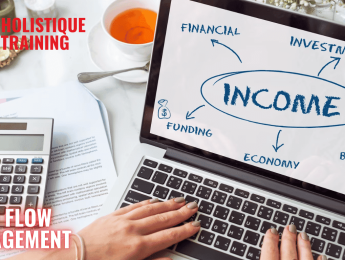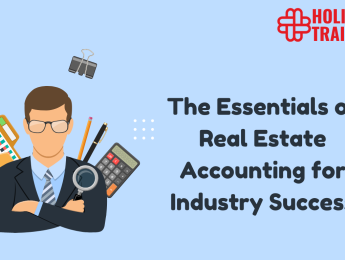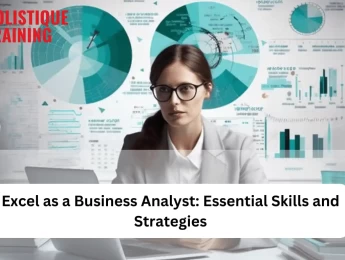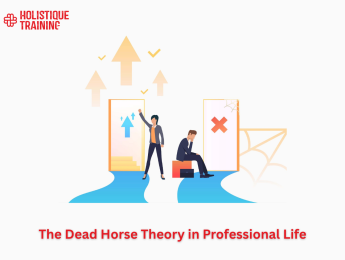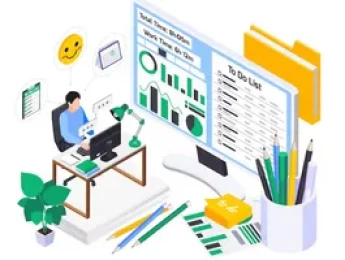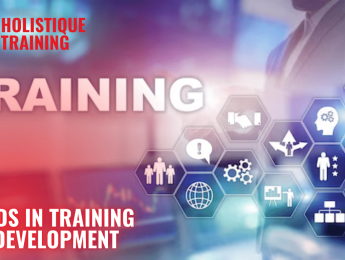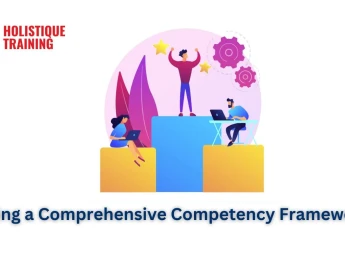- Table of Contents
- What Is Psychological Pricing?
- Psychological Pricing Strategies
- 1. Charm Pricing (Just-Below Pricing)
- 2. Decoy Pricing
- 3. Odd-Even Pricing
- 4. Left-Digit Effect
- 5. Bundled Pricing
- 6. Volume Discount
- Advantages of Psychological Pricing
- Increased Perceived Value
- Higher Sales and Conversion Rates
- Mitigating Price Sensitivity
- Simplified Decision-Making
- Enhanced Brand Perception
- Flexible and Versatile
- Psychological Pricing in B2B Marketing
- Value Perception and Rationalisation
- Pricing Bundles and Customisation
- Anchoring and Negotiation
- Tiered Pricing and Exclusivity
- Leverage Social Proof
- Your Role as a Business Owner
- Know Your Target Audience Intimately
- Test and Analyse Continuously
- Consider Perceived Value as Paramount
- Be Ethical
- Embrace Flexibility and Innovation
- Educate Your Team
- Foster a Culture of Customer-Centricity
- The Cultural Nuances of Psychological Pricing Around the Globe
- Conclusion
Introduction
In the dynamic world of business, the art of pricing goes beyond mere numbers. It delves into the depths of human behaviour, cognition, and emotions. Understanding pricing psychology is essential for every business owner, as it can make or break a deal, influence customer decisions, and ultimately contribute to the bottom line. In this blog post, we will explore the fascinating realm of psychological pricing, the strategies that accompany it, and the advantages it offers. As a business owner, arming yourself with this knowledge will empower you to make strategic pricing decisions that resonate with your target audience and lead to increased sales and profitability.
What Is Psychological Pricing?
Psychological pricing is a strategic approach that leverages human perception and cognitive biases to influence how customers perceive prices. It involves setting prices to create an emotional or psychological impact, leading consumers to purchase based on more than just rational considerations. By understanding how consumers perceive price points, businesses can craft pricing strategies that encourage buying behaviour and foster customer satisfaction.
Psychological Pricing Strategies
Psychological pricing is a multi-faceted approach that taps into the intricate workings of the human mind. According to Oracle Netsuite, the subconscious mind drives 95% of consumers' buying choices. This is why businesses can design strategies that captivate consumers and drive sales by understanding the quirks and biases governing our price perception. Let’s delve deeper into the world of psychological pricing, exploring the well-known techniques and uncovering three additional strategies that businesses can employ to leave a lasting impact on their customers:
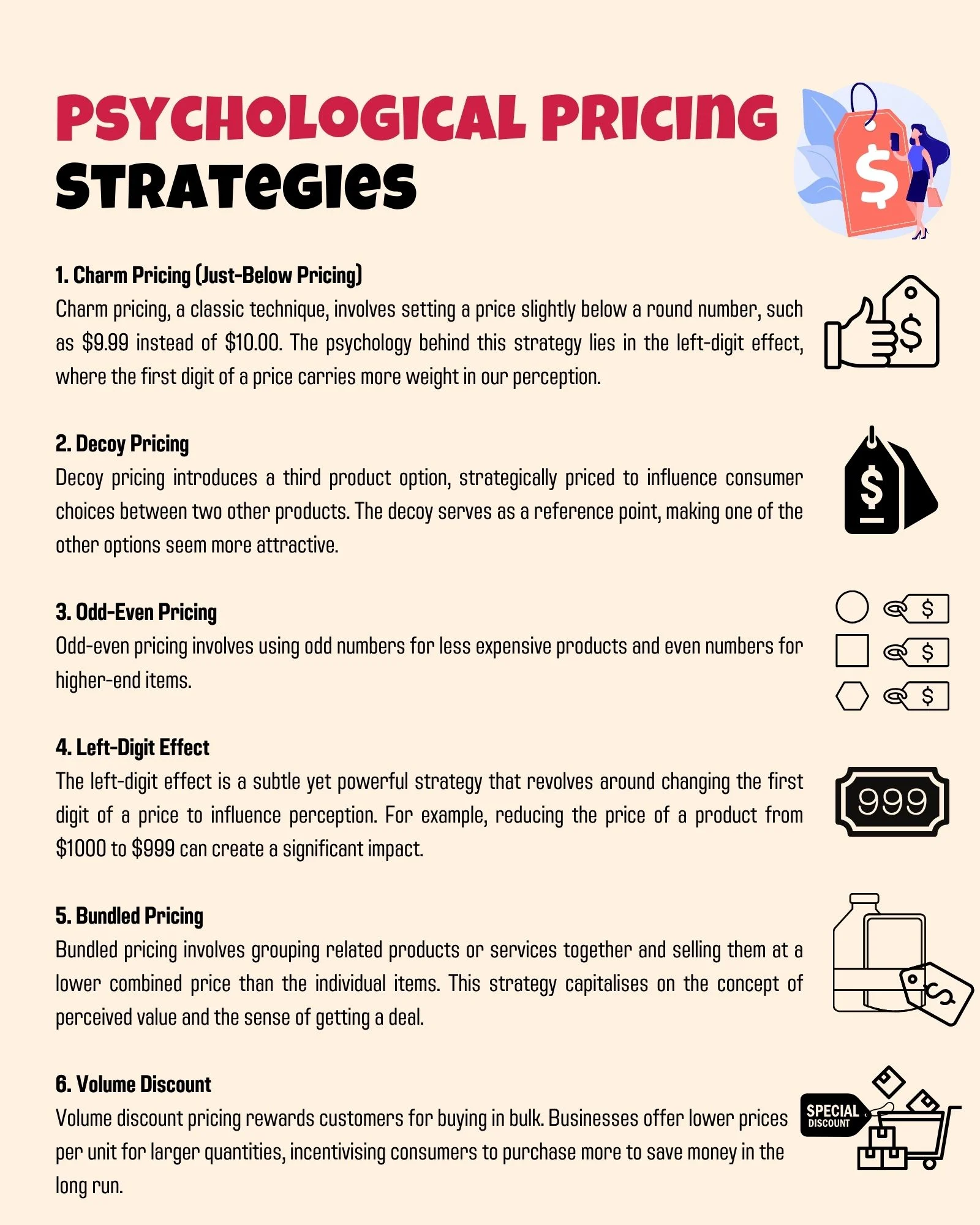
1. Charm Pricing (Just-Below Pricing)
Charm pricing, a classic technique, involves setting a price slightly below a round number, such as $9.99 instead of $10.00. The psychology behind this strategy lies in the left-digit effect, where the first digit of a price carries more weight in our perception. This subtle difference creates an illusion of a lower price, triggering a sense of affordability and value. Consumers perceive a product priced at $9.99 as closer to $9, despite the mere one-cent difference, making it more appealing and encouraging them to make a purchase. Research conducted by MIT and the University of Chicago, as mentioned in an article by Paddle, has demonstrated that products priced with figures ending in 9 experience heightened customer demand.
2. Decoy Pricing
Decoy pricing introduces a third product option, strategically priced to influence consumer choices between two other products. The decoy serves as a reference point, making one of the other options seem more attractive. For instance, a coffee shop might offer a small coffee for $2.50 and a large one for $3.50. By adding a medium-sized coffee for $3.00, the large coffee, priced at $3.50, suddenly appears as a better deal, leading customers to choose it over the smaller options. The decoy manipulates perception, nudging buyers towards the most profitable choice.
3. Odd-Even Pricing
Odd-even pricing involves using odd numbers for less expensive products and even numbers for higher-end items. For instance, a budget-friendly smartphone might be priced at $199, emphasising affordability, while a premium model is set at an even price like $800, conveying a sense of quality and exclusivity. This strategy leverages the psychology of odd and even numbers, where odd prices are perceived as friendlier and approachable, while even prices denote stability and luxury.
4. Left-Digit Effect
The left-digit effect is a subtle yet powerful strategy that revolves around changing the first digit of a price to influence perception. For example, reducing the price of a product from $1000 to $999 can create a significant impact. Despite the small reduction, the shift from four digits to three gives the impression of a massive discount, making the product appear much more affordable. Consumers tend to focus on the leftmost digit, associating it with the overall value of the item, influencing their purchasing decisions.
5. Bundled Pricing
Bundled pricing involves grouping related products or services together and selling them at a lower combined price than the individual items. This strategy capitalises on the concept of perceived value and the sense of getting a deal. For example, a software bundle that includes multiple applications at a discounted rate entices customers to buy the entire package, even if they might not have purchased each application separately. Bundled pricing maximises perceived value, encouraging customers to make larger purchases.
6. Volume Discount
Volume discount pricing rewards customers for buying in bulk. Businesses offer lower prices per unit for larger quantities, incentivising consumers to purchase more to save money in the long run. The psychological trigger here is the feeling of getting a bargain, which encourages customers to buy more than they initially intended. This strategy is commonly seen in wholesale markets and subscription services, where purchasing larger volumes results in significant cost savings per item or service.
By employing these strategies, businesses can influence consumer perception and guide their purchasing decisions. Understanding the nuances of psychological pricing equips entrepreneurs with a powerful tool to navigate the complex landscape of consumer behaviour, ensuring their products or services stand out in the competitive market. Remember, the art of pricing is not just about numbers; it's a delicate dance of perception, value, and psychology. Mastering this dance can significantly impact your business's success, making it a crucial skill for every entrepreneur in the dynamic world of commerce.
Strategy | Perception | Customer Response |
Charm pricing | Value and Affordability | Higher Purchase Intent |
Decoy Pricing | Comparative Value | Shift towards Profitable choices |
Odd-Even Pricing | Affordability and Quality | Influences Premium Perception |
Anchoring | Perceived Value | Encourage Willingness to Negotiate |
Bundled Pricing | Value in Package Deal | Promotes Higher Volume Purchases |
Table 1: Pricing strategies and consumer perceptions
Advantages of Psychological Pricing
Having explored the fascinating realm of psychological pricing and its underlying strategies, let's now shift our focus to the compelling advantages it brings to businesses. Understanding these advantages will enable you, as a business owner, to make informed pricing decisions that drive sales and forge lasting connections with your customers. Let's dive into the benefits of psychological pricing:
Increased Perceived Value
One of the most significant advantages of psychological pricing is its ability to enhance the perceived value of products or services in the eyes of consumers. By skillfully using pricing strategies like charm pricing and decoy pricing, businesses can create an illusion of affordability and value for money. When customers see a price ending in .99 or .95, they perceive it as significantly lower than the nearest round number. This perception creates a sense of getting a deal or discount, even if the difference is just a few cents. Consequently, consumers may feel more inclined to purchase because they believe they are getting more value than what they are paying for.
Higher Sales and Conversion Rates
The primary goal of psychological pricing is to positively influence consumer behaviour, leading to higher sales and conversion rates. When customers perceive prices as more affordable due to charm pricing or feel they are making better decisions through decoy pricing, they are more likely to follow through with a purchase. Lower price resistance and a sense of perceived value can increase customer loyalty and repeat purchases. As a result, businesses can experience significant growth in revenue and profitability.
Mitigating Price Sensitivity
Price sensitivity can be a challenge for businesses, especially in competitive markets where customers are price-conscious. Psychological pricing can be an effective tool to mitigate this sensitivity. By focusing on the perception of value and affordability, rather than just the numerical value of the price, businesses can shift the customer's attention away from the actual cost. This approach helps reduce customer hesitancy and empowers businesses to compete more effectively, even if their prices are slightly higher than competitors.
Simplified Decision-Making
Customers face countless daily choices, and decision fatigue can hinder their purchasing decisions. Psychological pricing can simplify the decision-making process for consumers by providing clear and compelling price differentials. When customers are presented with a price that ends in .99, it creates a mental shortcut, making it easier for them to process the information and decide quickly. As a result, customers are more likely to feel confident in their choices, leading to quicker and more decisive buying behaviour.
Enhanced Brand Perception
Strategic psychological pricing can influence how customers perceive a brand. When customers feel they are getting value for their money, it enhances their overall experience and satisfaction with the brand. Positive experiences can lead to word-of-mouth referrals and positive reviews, contributing to brand reputation, a successful brand image, and customer loyalty. Moreover, customers are more likely to associate the brand with positive emotions and a sense of trust, further solidifying their connection to the company.
Flexible and Versatile
Psychological pricing is a versatile tool that can be applied to various products and services across industries. Whether you sell consumer goods, software subscriptions, or high-end luxury items, the principles of psychological pricing can be adapted to suit your target audience and market dynamics. As a result, businesses of all sizes and industries can leverage psychological pricing to their advantage.
Pricing Technique | Brain Activation | Emotional Response |
Charm Pricing | Nucleus Accumbens | Positive, Rewarding Sensations |
Decoy Pricing | Prefrontal Cortex | Rationalisation, Decision-Making |
Anchoring | Amygdala | Perceived Value, Emotional Impact |
Odd-Even Pricing | Ventromedial Prefrontal Cortex | Affordability Perception |
Bundled Pricing | Hippocampus, Striatum | Value Assessment, Purchase Intent |
Table 2: Neurological responses to pricing techniques
Psychological Pricing in B2B Marketing
While psychological pricing is commonly associated with B2C (business-to-consumer) marketing, its principles can be equally effective in B2B (business-to-business) settings. In B2B transactions, decision-making processes can be more complex, involving multiple stakeholders and longer sales cycles. However, understanding the psychological factors that drive B2B buying behaviour can provide valuable insights to enhance pricing strategies and improve conversion rates. Here's how psychological pricing can be applied in the realm of B2B marketing:
Value Perception and Rationalisation
In B2B transactions, the perceived value of a product or service plays a crucial role in decision-making. Like in B2C, charm pricing can influence the perception of value and affordability for B2B buyers. By presenting prices just below round numbers, businesses can create a sense of cost-effectiveness, making the offering appear more enticing. Additionally, highlighting a product's unique benefits and cost savings can rationalise higher prices, making them seem justified in the context of the perceived value.
Pricing Bundles and Customisation
Decoy pricing can be particularly useful in B2B marketing, where products or services are often bundled or customised to suit clients' specific needs. By strategically introducing a decoy option that emphasises key features or an advantageous pricing point, businesses can direct B2B buyers towards their preferred package. This approach can simplify the decision-making process for buyers, as they perceive one option as the clear choice, reducing the time and effort required for deliberation.
Anchoring and Negotiation
In B2B negotiations, anchoring is a psychological bias where the first price presented serves as a reference point for subsequent discussions. Savvy B2B marketers can use anchoring to their advantage by presenting a higher initial price and then making concessions during negotiations. This tactic can create the perception of a significant discount, even if the final negotiated price is still profitable for the seller.
Tiered Pricing and Exclusivity
Tiered pricing models, such as offering different pricing levels for varying service levels or access, can appeal to B2B buyers seeking specific features or exclusivity. These tiers create an illusion of choice, catering to different customer segments based on their needs and budget constraints. This strategy can increase customer satisfaction and loyalty, as buyers feel they have chosen the best fit for their unique requirements.
Leverage Social Proof
B2B buyers are often influenced by the actions of their peers or industry leaders. By showcasing case studies, testimonials, and success stories from satisfied clients, businesses can leverage social proof to enhance the perceived value of their offerings. This creates a sense of trust and confidence in the product or service, making B2B buyers more willing to pay a premium price for a reputable solution.
Your Role as a Business Owner
As a business owner, understanding the psychology of pricing is pivotal in crafting effective pricing strategies. Here are some essential steps you can take to leverage psychological pricing for your business's benefit:
Know Your Target Audience Intimately
Understanding your audience goes far beyond knowing their demographics. It's about delving deep into their desires, needs, and, most importantly, their psychological triggers. Conduct comprehensive market research to uncover the subtle nuances of your consumers' behaviour. Identify their pain points, aspirations, and the emotional factors influencing their purchasing decisions. A profound understanding of your audience provides the foundation for building effective psychological pricing strategies.
Test and Analyse Continuously
The world of consumer behaviour is dynamic. What works today might not be as effective tomorrow. Implement different psychological pricing tactics and rigorously test their effectiveness. Monitor sales data, conversion rates, customer feedback, and even social media responses. Analyse this data meticulously to discern patterns and trends. By staying vigilant and adaptable, you can adjust your pricing strategies in real time, ensuring they are always in tune with your audience's evolving perceptions.
Consider Perceived Value as Paramount
Perceived value is the linchpin of successful psychological pricing. Your products or services might be top-notch, but your efforts could be in vain if the perceived value doesn’t align with the price. Highlight the unique selling points, features, and benefits of your offerings. Showcase the value they bring to the lives of your customers. Craft compelling narratives around your products, emphasising what they are and how they can transform your customers' experiences. When customers perceive the value as exceeding the cost, they are more likely to make a purchase, ensuring the longevity of your business.
Be Ethical
According to the Social Science Research Network, marketers have harnessed psychological pricing over the years to influence consumer buying behaviour skillfully. So, while psychological pricing can be a powerful tool, it's essential to use it ethically and transparently. Avoid manipulative tactics that might lead to customer dissatisfaction or erode trust in your brand. Be open about your pricing strategies. Educate your customers about the value they are receiving. Honesty and transparency build trust, fostering a loyal customer base that returns and advocates for your brand.
Embrace Flexibility and Innovation
The business landscape is ever-changing. New trends, technologies, and consumer behaviours constantly emerge. As a business owner, be prepared to adapt and innovate. Embrace new psychological pricing strategies as they evolve. Experiment with unconventional approaches that align with emerging market trends. Stay ahead of the curve by being open to change and innovation. Your ability to adapt ensures that your pricing strategies remain relevant and effective in an ever-evolving marketplace.
Educate Your Team
Your employees are the face of your business. Ensure that your team, especially those involved in sales and customer interactions, understands the psychology behind your pricing strategies. Train them to articulate the value propositions effectively. Equip them with the knowledge to address customer queries about pricing with confidence. An educated team enhances customer experience and becomes an integral part of your overall pricing strategy, ensuring consistency and coherence in your messaging.
Foster a Culture of Customer-Centricity
Above all, foster a culture within your organisation that places the customer at the heart of every decision, especially pricing. Encourage your team to empathise with your customers and see the world from their perspective. Cultivate an environment where feedback is valued, and customer insights are actively sought after. By immersing yourself and your team in your customers' world, you gain invaluable insights that can shape your pricing strategies in ways that genuinely resonate with your audience.
In summary, as a business owner, your role in mastering the art of psychological pricing is multifaceted. It demands a profound understanding of your audience, continuous testing and adaptation, a focus on perceived value, ethical practices, flexibility, a well-informed team, and, most importantly, a customer-centric mindset. By embracing these responsibilities, you not only optimise your pricing strategies but also create a business that thrives on the genuine connection and satisfaction of your customers, ensuring sustained success in the ever-changing landscape of commerce. Remember, in the realm of psychological pricing, your role is not just that of an owner but also that of a curator, shaping experiences and perceptions with every price tag.
The Cultural Nuances of Psychological Pricing Around the Globe
The impact of psychological pricing isn’t confined to a specific region; it transcends cultures, albeit in intriguingly different ways. In Western cultures, charm pricing (ending prices at .99) has become a norm, and consumers have grown accustomed to perceiving such prices as discounts. However, in some Eastern cultures, prices ending in .99 are associated with bad luck, and consumers may prefer rounded numbers.
In some regions, decoy pricing might be perceived as manipulative, while in others, it could be seen as a savvy business tactic. Understanding these cultural nuances is crucial for businesses operating in the global market. For example, in certain Middle Eastern cultures, bargaining and negotiation are deeply ingrained in the buying process, making anchoring strategies particularly effective during negotiations.
Moreover, social proof and testimonials play a significant role in markets where collectivism is valued. Customers are more likely to trust a product or service if their peers endorse it. This cultural insight shapes how businesses implement psychological pricing strategies, tailoring their approaches to align with the values and expectations of diverse cultural contexts.
By recognising these cultural differences, businesses can adapt their psychological pricing strategies to effectively resonate with consumers from various backgrounds, fostering trust and ensuring their pricing techniques are psychologically compelling and culturally sensitive.
Conclusion
The psychology of pricing is a captivating subject that reveals how subtle tweaks in price presentation can profoundly impact consumer behaviour. By incorporating psychological pricing strategies such as charm pricing and decoy pricing, businesses can influence customer perceptions, drive sales, and foster customer loyalty. As a business owner, your role in harnessing the power of psychological pricing is critical to achieving sustained success in the ever-evolving marketplace. Embrace the art and science of psychological pricing, and watch as your business flourishes through a deeper understanding of your customers' minds.
Unravel the mysteries of consumer behaviour and pricing psychology with our exclusive course, ‘Pricing Strategies Based on Revenue.’ Delve deep into the art and science of pricing, learning to craft strategies that influence perceptions and skyrocket your sales and customer loyalty. Don't just navigate the market; dominate it with the knowledge and techniques acquired from our expert-led course. Elevate your business to unprecedented heights; enrol now and transform your pricing strategies into a revenue-generating powerhouse. Your success story begins here.







